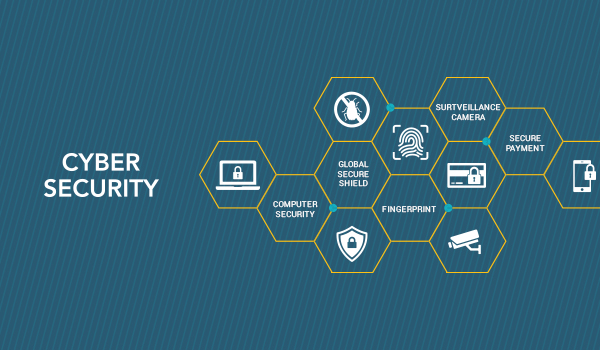
Security Awareness Program Framework
Understanding the Importance of Security Awareness
In today’s digital landscape, where cyber threats loom large, organizations must prioritize cybersecurity measures to safeguard their sensitive information. One such crucial aspect is implementing a robust security awareness program framework. This article delves into the intricacies of establishing an effective program to foster a culture of security consciousness within an organization.
Security Awareness Program Framework
Security awareness is the cornerstone of a proactive defence against cyber threats. It encompasses educating employees about potential risks, instilling best practices, and empowering individuals to promptly identify and respond to security incidents.
Understanding the Importance of Security Awareness
Understanding the importance of security awareness is crucial in today’s digital landscape. It empowers employees to recognize and respond to potential cyber threats effectively, mitigating the risk of data breaches and security incidents.
By fostering a culture of vigilance and accountability, organizations can protect sensitive information, uphold regulatory compliance, and safeguard their reputation. Security awareness enhances organizational resilience and instills confidence among stakeholders in the organization’s ability to address evolving cyber threats.

Components of a Security Awareness Program Framework
The components of a security awareness program framework include policies and procedures, training modules, simulated phishing exercises, and communication channels. Each element plays a crucial role in educating employees, fostering a security culture, and mitigating the risks posed by cyber threats within organizations.
Policies and Procedures
Policies and procedures are foundational elements of a robust security awareness program. They establish guidelines for the acceptable use of company resources, outline password management protocols, and detail incident reporting procedures.
Clear policies ensure consistency and clarity in addressing security concerns, while procedures provide a systematic approach for employees to follow in the event of security incidents. By adhering to established policies and procedures, organizations enhance their ability to safeguard sensitive information and mitigate risks posed by cyber threats effectively.
Training Modules
Training modules form the backbone of a robust security awareness program, providing employees with essential knowledge and skills to navigate cybersecurity threats effectively. These modules encompass various topics, including password management, data protection, and recognizing social engineering tactics.
Organizations can capture employees’ attention and facilitate meaningful learning experiences by delivering engaging and interactive content. Tailoring training modules to address specific job roles and security requirements ensures relevance and applicability to employees’ daily responsibilities.
Furthermore, incorporating practical examples and case studies helps reinforce key concepts and promote the retention of critical information. Regular updates to training materials enable organizations to adapt to evolving threats and emerging trends in cybersecurity. By investing in comprehensive training modules, organizations empower employees to become proactive defenders against cyber threats and uphold the integrity of organizational security protocols.
Simulated Phishing Exercises
Simulated phishing exercises are valuable tools for bolstering employees’ awareness and resilience against phishing attacks. These exercises replicate real-world scenarios where employees receive fake phishing emails or messages designed to mimic common tactics used by cybercriminals.
Organizations can assess their susceptibility and readiness to identify and report phishing attempts by exposing employees to these simulated attacks in a controlled environment. Furthermore, these exercises provide valuable learning opportunities for employees to recognize red flags, verify sender authenticity, and apply best practices for email security.
Through feedback and analysis of performance metrics, organizations can tailor training and awareness efforts to address specific vulnerabilities and enhance overall cyber hygiene. Simulated phishing exercises are proactive measures to fortify defences and mitigate the risk of successful phishing attacks on organizational networks and sensitive information.

Communication Channels
Effective communication channels are essential for disseminating crucial security information and fostering a culture of awareness within organizations. Employing diverse channels such as email newsletters, intranet portals, and interactive workshops enables reaching employees across different departments and levels.
Clear and concise messaging and regular updates ensure that security-related information remains accessible and relevant to all staff members. Creating avenues for feedback and questions encourages active participation and engagement in security initiatives.
Leveraging multiple communication channels facilitates continuous dialogue and reinforces fundamental security principles among employees. By establishing robust communication channels, organizations can promote transparency, collaboration, and collective responsibility in safeguarding sensitive data and mitigating security risks effectively.
Designing an Effective Security Awareness Program
Designing an effective security awareness program requires a meticulous approach that aligns with organizational objectives and addresses specific security challenges. It begins with thoroughly assessing the organization’s risk profile, employee demographics, and existing security practices.
Tailoring the program content and delivery methods to resonate with diverse audiences ensures maximum engagement and relevance. Incorporating interactive elements, real-world scenarios, and practical examples enhances learning retention and application.
Moreover, integrating feedback mechanisms enables continuous improvement and adaptation to evolving threats. By fostering a collaborative environment and promoting a culture of security awareness, organizations empower employees to become proactive defenders against cyber threats. Effective program design strengthens organizational resilience and instills stakeholders’ confidence and trust in safeguarding sensitive information and assets.
Implementing the Security Awareness Program
Implementing the Security Awareness Program involves orchestrating various initiatives to ensure widespread adoption and effectiveness. This includes conducting comprehensive training sessions tailored to different employee roles and levels of expertise.
Organizations should also establish clear channels for communication and support, allowing employees to seek guidance and report security incidents promptly. Ongoing evaluation and updates to training materials and methodologies are essential to address emerging threats and reinforce critical concepts.
Additionally, fostering a culture of continuous learning and accountability encourages active participation and adherence to security best practices. By integrating security awareness into daily operations and organizational policies, companies can create a resilient environment where employees are empowered to recognize and respond effectively to potential security threats.
Monitoring and Measuring Success
Monitoring and measuring the success of security awareness programs is paramount to their effectiveness and ongoing improvement. Key performance indicators (KPIs) such as participation rates, completion of training modules, and feedback from employees provide valuable insights into program engagement and impact.
Tracking metrics related to incident response times, phishing simulation results, and the frequency of security incidents helps assess the program’s effectiveness in mitigating risks. Additionally, establishing feedback loops and conducting regular evaluations enable organizations to identify areas for enhancement and refinement.
By leveraging data-driven insights, organizations can make informed decisions, allocate resources effectively, and continuously adapt their security awareness strategies to address evolving threats. Monitoring and measuring success ensures that security awareness programs remain relevant, impactful, and aligned with organizational objectives in safeguarding against cyber threats.
Challenges and Solutions in Security Awareness Programs
Challenges in security awareness programs often revolve around overcoming employee resistance, addressing evolving threats, and ensuring sustained engagement. Employee apathy or scepticism towards security initiatives can hinder program effectiveness.
The rapidly changing threat landscape also requires constantly adapting training content and methods. Solutions entail fostering a security culture wherein employees feel empowered and motivated to participate actively in security practices. Tailoring training materials to resonate with diverse audiences and providing incentives for compliance can help mitigate resistance.
Moreover, staying abreast of emerging threats and leveraging technology for engaging training delivery can enhance program relevance and effectiveness. By addressing these challenges proactively and collaboratively, organizations can cultivate a culture of vigilance and resilience against evolving cyber threats.
Integrating Security Awareness into Company Culture
Integrating security awareness into company culture involves embedding security principles and practices into everyday operations. It calls for cultivating an attitude in which all staff members share collective responsibility for security rather than viewing it as a separate duty.
This integration begins with leadership setting clear expectations and providing the necessary resources for security initiatives. By incorporating security awareness into onboarding processes, training sessions, and regular communications, organizations can reinforce its importance and relevance to employees’ roles.
They encourage open dialogue, recognize security-conscious behaviour, and promote accountability to support its integration into the company culture. Ultimately, embedding security awareness fosters a resilient environment for proactive risk mitigation.
The Role of Leadership in Promoting Security Awareness
The role of leadership in promoting security awareness is pivotal in shaping organizational culture and fostering a proactive approach to cybersecurity. Leaders set the tone by championing security initiatives, demonstrating a commitment to compliance, and prioritizing investments in training and resources.
By integrating security awareness into strategic planning and decision-making processes, leaders emphasize its importance as a core organizational value. Furthermore, leading by example inspires trust, accountability, and employee engagement, encouraging active participation in security practices.
Effective leadership cultivates a culture of vigilance and resilience in organizations. Strong leadership ensures that security awareness remains a top priority, driving continuous improvement and adaptation to emerging threats.

Conclusion
In conclusion, establishing a comprehensive security awareness program framework is imperative in today’s digital landscape to mitigate cyber threats effectively. Organizations can empower employees to safeguard sensitive information and protect organizational assets by prioritizing education, engagement, and continuous improvement.
A well-designed program that addresses specific organizational needs and risk profiles lays the foundation for a security-conscious culture. Leadership commitment, ongoing evaluation, and adaptation to emerging threats are critical to the program’s success.
Fostering security awareness strengthens the organization’s resilience against cyber attacks, instils stakeholder confidence, and enhances overall operational resilience. Embracing security awareness as a collective responsibility will enable organizations to navigate the evolving threat landscape with vigilance and confidence.
How frequently should security training sessions be conducted?
The frequency of security training sessions depends on various factors, including the organization's industry, risk profile, and regulatory requirements. Typically, organizations conduct regular security training sessions, such as quarterly or bi-annually, to reinforce key concepts, address emerging threats, and update employees on new policies and procedures. However, the frequency may vary based on the organization's specific needs and evolving threat landscape.
What are some common challenges encountered in implementing security awareness programs?
Some common challenges in implementing security awareness programs include overcoming employee resistance or apathy, addressing budget constraints, ensuring consistent engagement and participation, tailoring content to diverse audiences, and measuring the program's effectiveness. Keeping the program content updated and relevant to evolving threats also poses a continuous challenge for organizations.
How can organizations measure the effectiveness of their security awareness initiatives?
Organizations can measure the effectiveness of their security awareness initiatives through various metrics and Key Performance Indicators (KPIs). These may include tracking participation rates in training sessions, assessing improvements in employees' knowledge and behavior related to security practices, monitoring the number and severity of security incidents or breaches, and soliciting employee feedback through surveys or assessments. Regular evaluation and analysis of these metrics helps organizations gauge the impact of their security awareness efforts and identify areas for improvement.
What role does employee feedback play in refining security awareness programs?
Employee feedback plays a crucial role in refining and enhancing security awareness programs. By soliciting employee input, organizations gain valuable insights into the effectiveness of existing training materials, communication channels, and the overall program structure. Feedback helps identify areas for improvement, address specific concerns or misconceptions, and tailor future initiatives to better meet employees' needs and expectations. Additionally, involving employees in the feedback process fosters a sense of ownership and engagement in the organization's security efforts.









